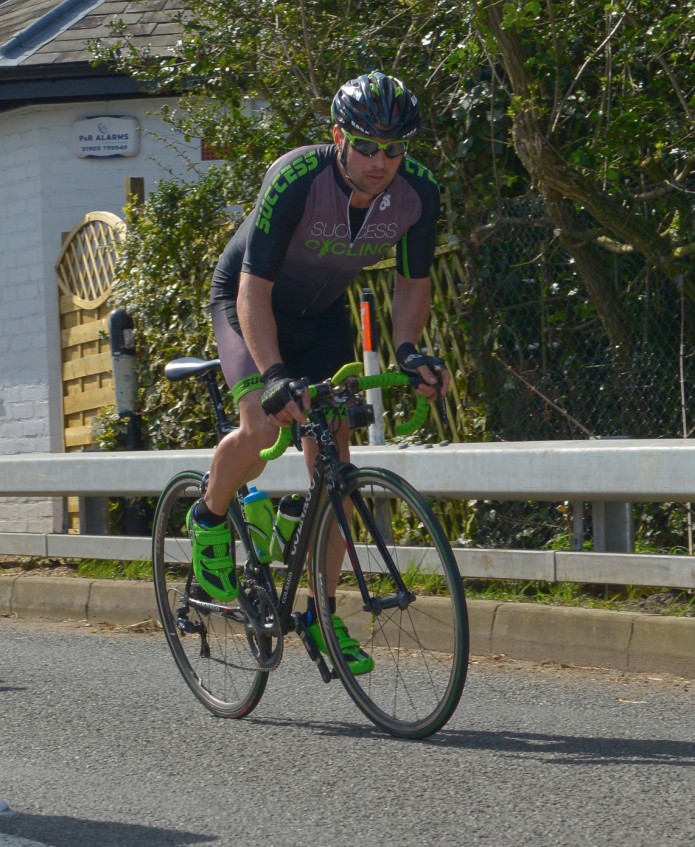Key Cycling Interval Training Sessions to Success
- July 7, 2015
- Success Coach
- Uncategorized
- cycling, training
- No Comments

To train harder you have to know which types of sessions will push you to your max. Here are eight key training sessions that should feature on any serious cyclists training schedule. Some of these sessions have less structure than others and which ones you pick to use will depend on your individual goals. If you aren’t following a dedicated training plan you have more then likely to throw in a fartlek session or gone out for a good hard thrash with the local chain gang than do a classic interval session. These are alos the more sociable sessions you can do with your mates. Ones that require you to stick to a specific tempo or effort are best completed on your own.
Before starting on high intensity interval training sessions it is important that you have fully developed your fitness base. Rapidly increasing the intensity of your training can result in injury and overtraining. Start by introducing one or two hard sessions a week into your cycling training programme, maybe one sprint session and one threshold session. Lactate tolerance and anaerobic interval will give you the most bang for your buck if you are looking to enhance your performance over distance or to raise your Vo2 max. Sprint and power sessions will give you a noticeable improvement in peak speed fairly rapidly. Speed work is the icing on your fitness cake. Remember that these are hard sessions and should only be done on fresh legs. If you are tired from a hard week of training you probably won’t be getting the maximal benefit from them.
Key Workout Sessions
Lactate Threshold Training – Threshold training is an absolute must for anyone who wants to be able to sustain high efforts on the bike. It will improve your time trialling and climbing, and will make bunch riding feel easier. And of course, you’ll have enough left in the tank for the sprint, too. If you add one or two sessions a week designed to raise your threshold, you will rapidly feel the benefits in all areas of your riding. The intensity of these sessions is critical, so make sure you are at your threshold. (for a turbo training download to help you find your threshold click here). If you don’t put enough effort in, you won’t get much back out.
Threshold Intervals – After a warm up raise your heart rate or power to your threshold level and maintain for 10 – 20 minutes depending on your current fitness. Recover for 50% of the interval time before repeating again. As you get fitter you need to increase the length and number of repetitions up until you have completed an hours worth of threshold effort.
Sprints – Developing a fast and powerful sprint will make a real difference to what you can achieve as a rider. To a certain extent a good sprint is governed by your genes and fast twitch muscle fibres. While the best sprinters are naturally talented, everyone can improve on what they’ve got with proper training.
Jumps – On flat or slightly downhill terrain, spin along briskly. When you reach a designated marker such as a tree or parked vehicle, get out of the saddle and accelerate hard, return to the saddle and maintain high speed and cadence for 10 seconds. Allow plenty of recovery between efforts so that each one can be performed maximally. Around six to twenty in a one hour to 90 minute ride.
Acceleration Sprints – Find a short circuit on quiet roads with three or four corners around 500 meters to a one kilometre apart. Ride the whole circuit hard and aim to sprint out of every other corner. This is a key skill in racing where the bunch accelerates out of the bends. This is a hard session incorporating handling skills as well as high intensity efforts.
Power Sprints – Ride to the mid point of a hill or till the top is in view, then change u to a bigger gear and sprint hard over the top. This helps develop explosive power and strength.
Downhill Sprints – In most situations you will find yourself in, you will already be going at a high pace. To accelerate you need to be able to rapidly raise your speed eve though you are already pedalling fast in a high gear. On a shallow gradient ride down in a fairly big gear at high cadence and then accelerate hard out of the saddle to generate even greater leg speed before sitting down and trying to maintain cadence. Alternatively you can practise with another rider who leads you out and practise accelerating past them from your already high speed. Taking it in turns to be the one doing the lead out.
Pyramid Interval Sprints – After a good warm up sprint as hard as you can for 10 seconds then recover for 1 minute before sprinting again for 20 seconds. Repeat this for 30 seconds, 40 seconds, 50 seconds and 60 seconds before coming back down in reverse 50, 40, 30, 20 and finally 10 seconds.
Training Above Lactate – Imagine that your lactate threshold is your red line. Anything above feels very uncomfortable. During competitions you will have to go over this redline to close a gap, accelerate over the top of a climb or make an attack. You need to train your body’s ability to operate at this level and most importantly how to recover enough to go again. The best way to do this is with intervals, pushing your body beyond your threshold for a limited time.
Anaerobic Intervals – Ride in power zone 6 (120% + of FTP) or 90 – 95% of max for two minutes with 4 minutes recovery between intervals. These are very challenging, so do not expect to perform more than 10 per session. Start with 5 and add more as your fitness improves.
Lactate Tolerance Intervals – For this exercise it is really important that you know exactly where your threshold is (click here for help to do this), as it requires you spend very carefully controlled times just above and just below it. Ideally you would do this session using power and watts rather than heart rate as it is more accurate and will ensure that you remain in the very narrow zone throughout the session. This builds high levels of lactic acid, and as there is no recovery time your body is being trained to disperse and buffer the effects within the muscles. If you can manage lactic acid buildup you will be able to maintain high intensity efforts in races or hill climbing for much longer. Warm up well then increase you effort to just below (5 – 10%) of your threshold. Stay there for several minutes before moving up to threshold for a few minutes. Then increase some more to just above your threshold (5 – 10%) for a few minutes. after this move your effort back to the beginning just below your threshold and repeat the cycle over again. Aim for 20 minutes where you fluctuate either side of your threshold without going to far below or above it.
Hope you find these workouts to be a great addition to your overall training plan and would love to here your comments feedback.
Leave a Comment cancel
This site uses Akismet to reduce spam. Learn how your comment data is processed.






